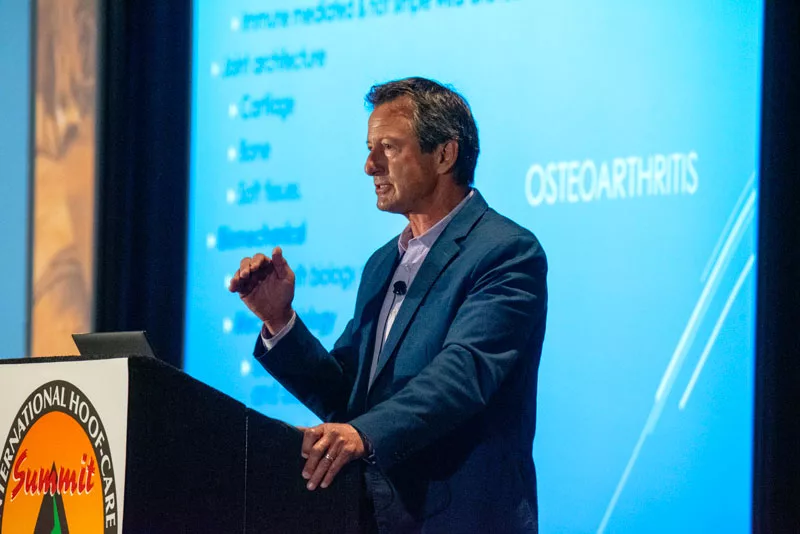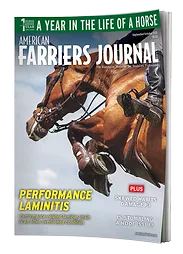This year marks the 50th anniversary (and 32nd year at Lessiter Media) of American Farriers Journal covering the farrier trade. We’re asking hoof-care professionals for a few words to include in a “From the Audience” section of our coverage – in the December edition.
International Equine Veterinarian Hall of Famer Kit Miller, DVM, of Brewster, N.Y., shares his thoughts on the three questions we are asking hoof-care professionals.
Q. When you look back at the last 50 years of new technologies, what were the biggest defining moments that forever changed farrier and equine health as we know it today?
A. I think the introduction of digital radiography has had the greatest impact on sport horse veterinary care. It has enabled practitioners to acquire high-quality diagnostic imaging and to track or monitor changes in orthopedic conditions over time. When used correctly, digital radiography can also be of great benefit in veterinarian-farrier collaboration.
Q. For the newer generation, what are the biggest ways that farriery and equine health is totally different from that of 50 years ago?
A. The competition schedules for sport horses have lengthened to the point there is no longer an “off-season.” This has placed significantly increased, and at times, unreasonable demands on the sport horse caregivers, veterinarians and farriers, to try and maintain equine health and athletic soundness.
Q. What are some specific ways that American Farriers Journal magazine impacted your business and staff?
A. AFJ’s commitment to education and to promoting veterinarian-farrier collaboration has been enormously helpful to me. I have found the content of both the Journal and the International Hoof-Care Summitt to be both relevant and innovative.
Professionals from around the world share their insights into the important milestones, innovations and the role American Farriers Journal has played over the last half-century.
Read essays from...
- Bob Smith
- Stuart Muir
- Mike Lessiter
- Heidi Larrabee
- Esco Buff
- Walt Taylor
- Simon Curtis
- Renate Weller
- Kit Miller
- Steve Kraus
- James Orsini
- Connor Sloman
- Cody Ovnicek
- Bill Everitt
- Mel Jones
- Dick Mansmann
- Brian Rusnak
- Pat Tearney
- Doug Butler
- Joanne Volkert
- Virgil Gluth
- Gretchen Cardoso
- Kim Otterson
- Brian Hyodo







